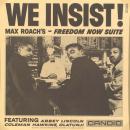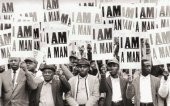Were you there when they crucified my Lord? (Were you there?)
Were you there when they crucified my Lord?
O Sometimes it causes me to tremble! tremble! tremble!
Were you there when they crucified my Lord?
Were you there when they nail'd him to the cross? (Were you there?)
Were you there when they nail'd him to the cross?
O Sometimes it causes me to tremble! tremble! tremble!
Were you there when they nail'd him to the cross?
Were you there when they pierced him in the side? (Were you there?)
Were you there when they pierced him in the side?
O Sometimes it causes me to tremble! tremble! tremble!
Were you there when they pierced him in the side?
Were you there when the sun refused to shine? (Were you there?)
Were you there when the sun refused to shine?
O Sometimes it causes me to tremble! tremble! tremble!
Were you there when the sun refused to shine?
Were you there when they crucified my Lord?
O Sometimes it causes me to tremble! tremble! tremble!
Were you there when they crucified my Lord?
Were you there when they nail'd him to the cross? (Were you there?)
Were you there when they nail'd him to the cross?
O Sometimes it causes me to tremble! tremble! tremble!
Were you there when they nail'd him to the cross?
Were you there when they pierced him in the side? (Were you there?)
Were you there when they pierced him in the side?
O Sometimes it causes me to tremble! tremble! tremble!
Were you there when they pierced him in the side?
Were you there when the sun refused to shine? (Were you there?)
Were you there when the sun refused to shine?
O Sometimes it causes me to tremble! tremble! tremble!
Were you there when the sun refused to shine?
Contributed by Bernart Bartleby - 2017/2/12 - 18:42
Trovo interessanti le ulteriori analisi del testo riportate da Wikipedia e in particolare la possibile sostituzionne di " cross " con " tree ".
Lyrical analysis
Lyrical analysis
“Were You There” utilizes a system of coded language in its lyrics like most, if not all, African-American spirituals.
Metaphors, especially those involving Old Testament figures, as well as Jesus, are often central to the meanings of spirituals. “Were You There” tells the story of the Crucifixion of Jesus. Underneath this narrative, however, is a metaphor likening Jesus's suffering to the suffering of slaves.
In some versions of the song, the singer asks “Were you there when they nailed Him to the Tree?” Replacing Jesus’ cross with a tree further strengthens the metaphor between Jesus’ suffering and slaves’ suffering.
African-Americans during the antebellum period, and all the way into the Jim Crow era, would have drawn a connection between Jesus nailed to a tree and the frightening prevalence of lynchings in their own lives.
Metaphors, especially those involving Old Testament figures, as well as Jesus, are often central to the meanings of spirituals. “Were You There” tells the story of the Crucifixion of Jesus. Underneath this narrative, however, is a metaphor likening Jesus's suffering to the suffering of slaves.
In some versions of the song, the singer asks “Were you there when they nailed Him to the Tree?” Replacing Jesus’ cross with a tree further strengthens the metaphor between Jesus’ suffering and slaves’ suffering.
African-Americans during the antebellum period, and all the way into the Jim Crow era, would have drawn a connection between Jesus nailed to a tree and the frightening prevalence of lynchings in their own lives.
Pluck - 2023/1/11 - 18:53
×
![]()
Note for non-Italian users: Sorry, though the interface of this website is translated into English, most commentaries and biographies are in Italian and/or in other languages like French, German, Spanish, Russian etc.








Uno degli spiritual, gli inni religiosi degli schiavi afro americani, più famosi
Il testo fu trascritto per la prima volta in “Old Plantation Hymns”, raccolta realizzata e pubblicata nel 1899 da William Eleazar Barton (1861-1931), ministro della Chiesa congregazionalista (protestante, tra puritanesimo e calvinismo)
Testo trovato su en.wikipedia
Negli anni 60 e 70 del 900 “Were You There When They Crucified My Lord” divenne un inno del movimento per i diritti civili. Molti artisti afroamericani e non vi si sono cimentati, a partire dalla splendida versione di Max Roach del 1971 (in “Max Roach With The J.C. White Singers – Lift Every Voice and Sing”), dedicata nel sottotitolo a “Malcolm, Martin, Medgar And Many More”, Malcolm X, Martin Luther King, Medgar Evers e tutti gli altri neri che hanno dato la vita per la loro gente.